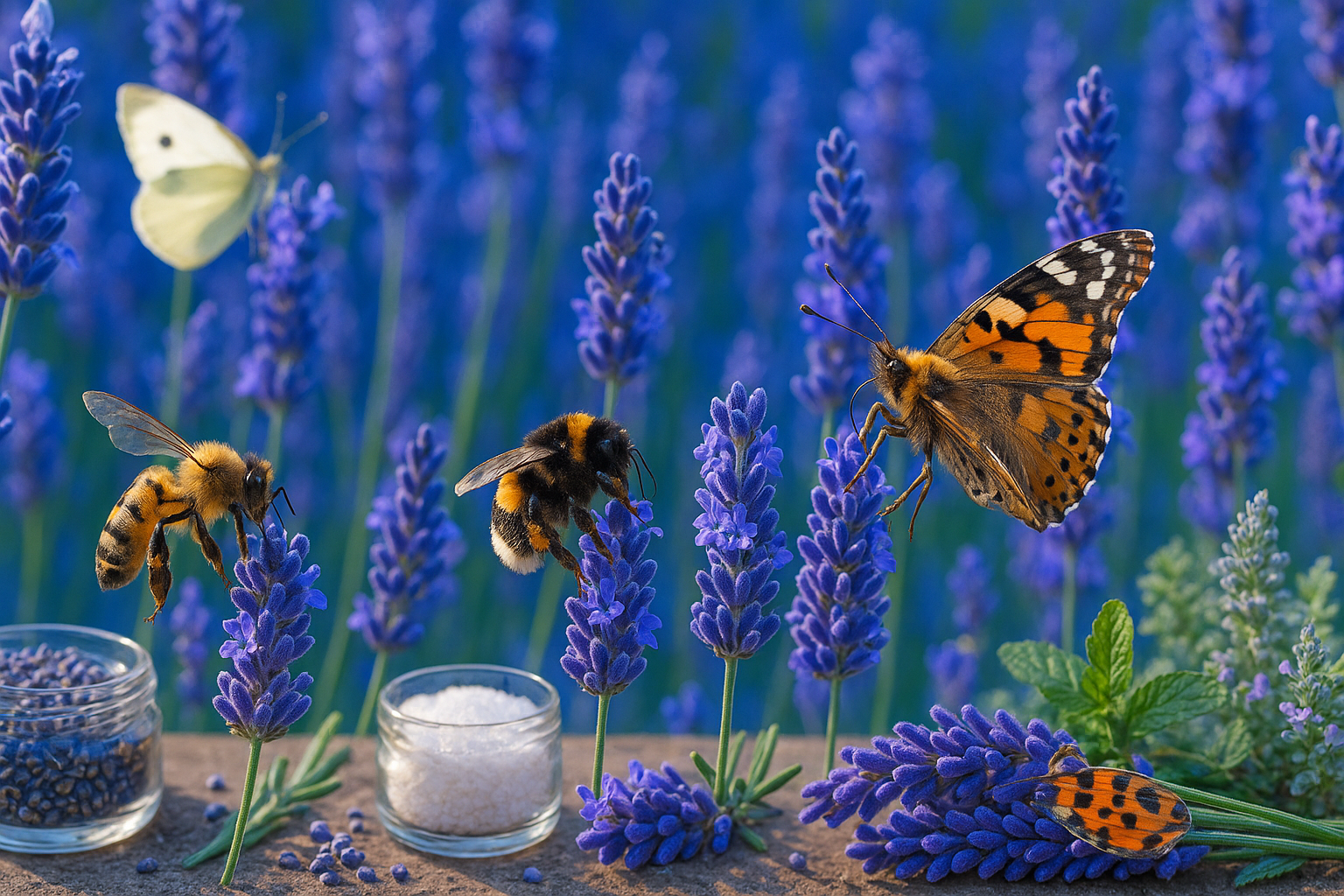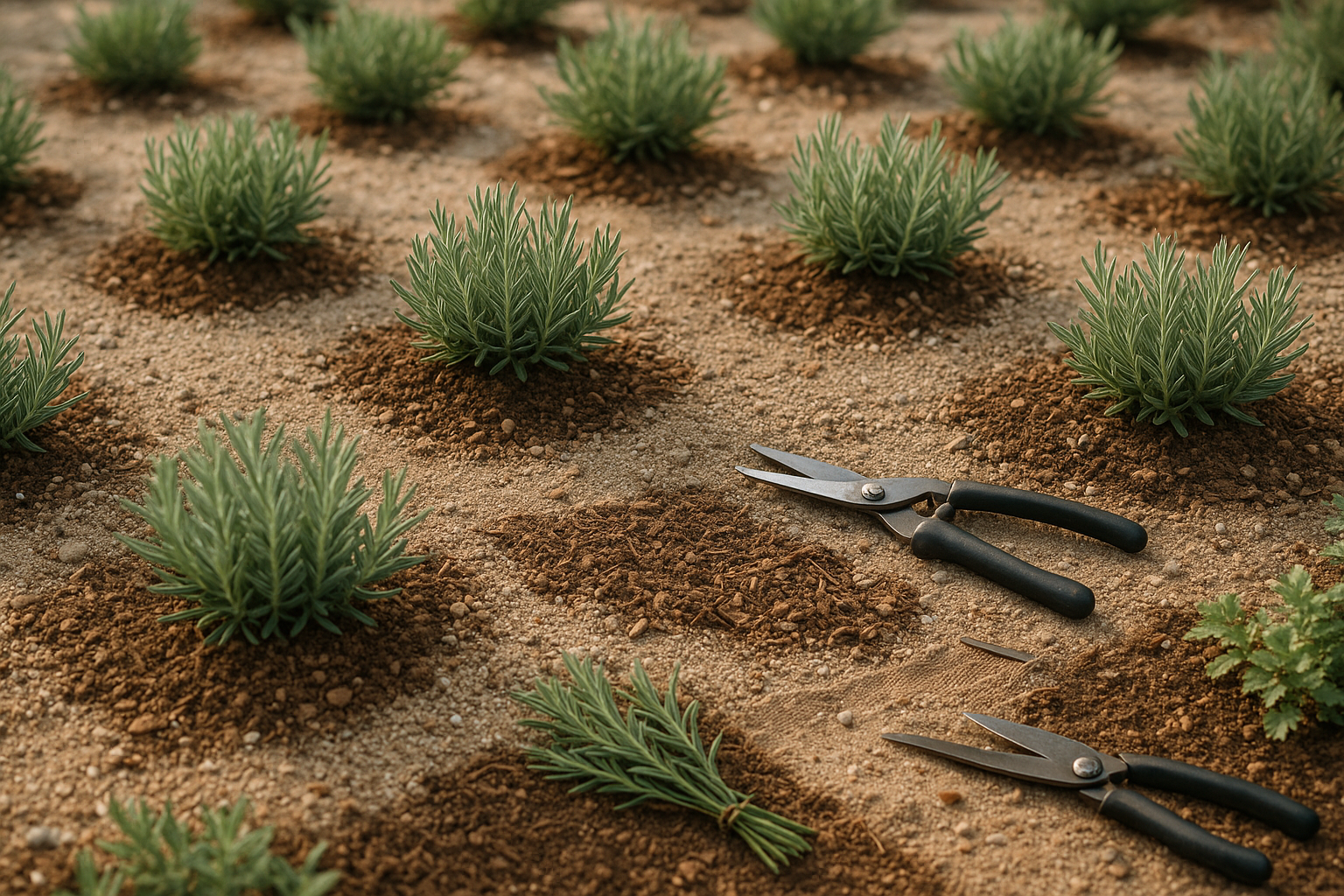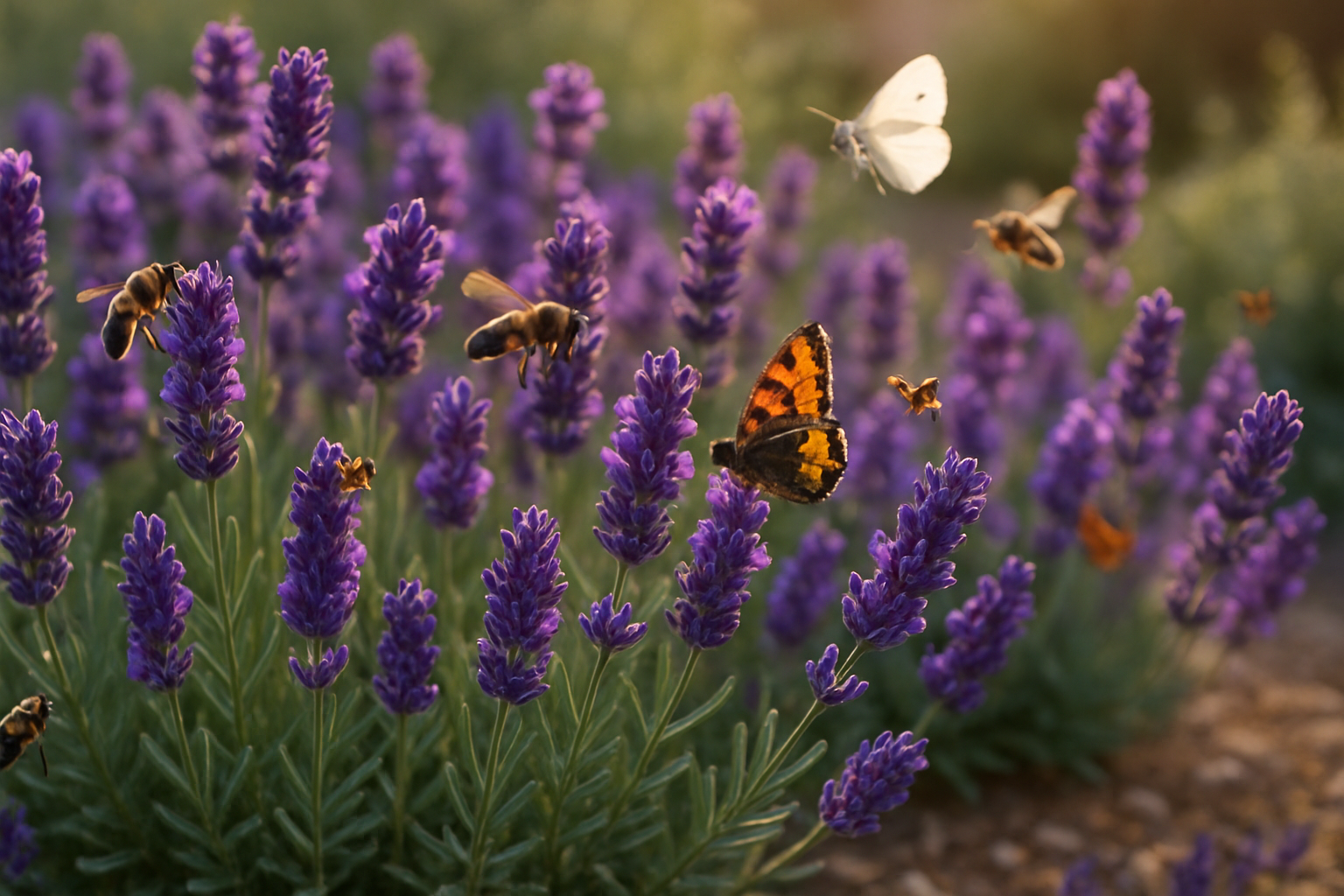Introduction
Lavender pollinators are essential for thriving gardens and healthy ecosystems. Bees, butterflies, and other pollinators not only help flowers bloom but also ensure that fruits and vegetables grow, making them vital to both nature and our food supply. Without these helpful critters, gardens can lose their vibrancy, and crops may suffer.
That’s why it’s crucial for gardeners to choose plants that actively support pollinators—attracting bees and butterflies and providing them with reliable sources of nectar and pollen. One of the best choices you can make for your garden is planting lavender.
Known for its fragrant purple blooms, lavender not only adds beauty and a soothing scent to any landscape but also acts as a magnet for a variety of pollinators. Bees, in particular, flock to lavender because its abundant nectar is easy to access and rich in energy.
By incorporating lavender into your garden beds or even pots on a patio, you’ll help support local bee populations—and get to enjoy a garden buzzing with life and color. It’s a simple step that benefits your plants, pollinators, and the planet as a whole.
Why Lavender Attracts Bees and Pollinators

Lavender is a favorite among pollinators for several compelling reasons, making it a must-have plant in any pollinator-friendly garden. Its vibrant purple blooms stand out vividly, especially to bees, who see colors differently than humans and are particularly drawn to blue and violet hues.
The sweet, calming aroma of lavender flowers doesn’t just soothe humans—it acts as a beacon for bees and butterflies, guiding them from a distance. Beyond its looks and scent, lavender produces nectar generously throughout its long blooming season, providing honeybees, bumblebees, and butterflies with a steady food source when many other flowers have faded.
The structure of lavender’s tubular flowers is perfectly designed for pollinators with long tongues, like bumblebees and some butterflies, allowing them to access nectar efficiently. Research published in the journal Scientific Reports shows that honeybees consistently prefer lavender over other summer-flowering plants, spending more time visiting its blossoms and returning frequently.
Gardeners often notice swarms of bees and flashes of butterfly wings around their lavender bushes during peak bloom—a real-world testament to the plant’s magnetic pull.
Maximizing Lavender’s Pollinator Appeal
- Plant lavender in sunny clusters
- Avoid pesticides
- Let the flowers bloom fully
- Choose varieties with overlapping bloom times, like English and French lavender, to provide months of continuous nectar
These qualities make lavender not only a beautiful addition to your landscape but also a vital resource for hardworking pollinators, supporting healthy local ecosystems.
Best Lavender Varieties for Attracting Pollinators
When it comes to attracting bees, butterflies, and other pollinators, not all lavender varieties are created equal. English lavender (Lavandula angustifolia) is a top pick for most gardens, producing fragrant blooms from late spring to midsummer. Popular cultivars like ‘Hidcote’ and ‘Munstead’ are especially attractive to bumblebees and honey bees, and their compact growth makes them easy to manage in borders or pots.
Spanish lavender (Lavandula stoechas), recognized by its “rabbit ear” petals, blooms earlier in spring and often thrives in warmer, drier climates; ‘Otto Quast’ is a standout for attracting butterflies. Meanwhile, French lavender (Lavandula dentata) extends the pollinator buffet into late fall with its longer blooming season, though it prefers mild winters.
If you want season-long pollinator activity, consider mixing varieties with staggered bloom times in your garden. For ease of cultivation, English lavender suits cooler, humid regions, while Spanish and French types thrive in Mediterranean or southern climates with poor, well-drained soils.
Regardless of the type, choose healthy young plants or seeds from reputable nurseries, and prioritize native pollinator preferences—local bees may respond best to cultivars closest to wild species. Finally, avoid pesticides and deadhead spent blooms to encourage reflowering and consistent pollinator visits throughout the season. This way, you’ll create both a beautiful and bustling haven for local wildlife.
Planting and Caring for Lavender to Maximize Pollinator Visits

To attract the most pollinators, plant your lavender in early spring after the last frost or in early fall when temperatures are mild. This timing allows the roots to settle before extreme weather arrives. Choose a sunny spot that receives at least 6–8 hours of direct sunlight daily, as both lavender and pollinators thrive in warm, bright environments.
Plant lavender in well-draining soil, ideally sandy or loamy, and avoid heavy clay soils that retain too much moisture. If necessary, amend garden beds with sand or fine gravel to improve drainage. Ensure the soil’s pH is neutral to slightly alkaline (around 6.5–7.5).
Spacing your plants 18–24 inches apart is also important to allow good air circulation, which helps prevent fungal diseases. Lavender requires minimal watering; water deeply but infrequently, letting the soil dry out between waterings to mimic its Mediterranean roots. Overwatering is a common mistake that can lead to root rot.
Prune lavender in early spring or right after the first bloom to encourage bushy growth and more flowers. More blooms will attract more bees, butterflies, and other pollinators. Always use clean, sharp shears and cut just above new leaf growth.
Avoid pesticides and synthetic fertilizers, as these chemicals can harm visiting pollinators. Instead, feed your plants with organic compost and mulch. Hand-pick pests if needed, and encourage natural predators like ladybugs to keep pest populations in balance.
With these simple, natural practices, your lavender won’t just flourish—it will become a thriving hub for pollinators, supporting your whole garden’s health and beauty.
How to Design a Pollinator-Friendly Garden with Lavender
Designing a pollinator-friendly garden with lavender begins by pairing it with plants that not only complement its fragrant purple blooms but also attract a variety of bees, butterflies, and other helpful insects.
Catmint (Nepeta), with its lilac-blue flowers, thrives in similar well-drained, sunny conditions and provides nectar over a long season. Low-growing thyme is another superstar—use it as a groundcover around lavender clumps to create a fragrant, pollinator-attracting tapestry. For vertical interest and extended color, purple coneflower (Echinacea) draws bees and butterflies while offering sturdy stems that won’t overwhelm your lavender.
To maximize pollinator activity, group these companion plants in loose clusters rather than tidy rows, and repeat these groupings throughout your garden to help pollinators spot resources easily. Place the tallest plants, like coneflowers, toward the back or center of the bed, with lavender and thyme filling mid-level and front spaces. This layering gives pollinators easy access and provides continuous blooms from spring through late summer.
Be sure to keep invasive or highly competitive plants like mint and aggressive grasses away from lavender beds, as they can crowd out nectar-rich blooms and disrupt the delicate balance that attracts pollinators. Also, avoid using pesticides, as even those labeled safe for gardens can harm beneficial insects.
By choosing the right companions, planning your layout thoughtfully, and being mindful of plant pairings, you’ll create a thriving, beautiful garden that buzzes with life all season long.
Other Ways to Support Bees and Pollinators in Your Garden
Supporting bees and pollinators in your garden goes beyond simply planting flowers. One easy way to help is by providing clean water—shallow dishes filled with pebbles work great, giving bees a safe place to land and drink.
Create shelter by letting some areas of your garden stay a little wild, with logs, leaves, or even unmowed patches of grass; these spaces offer essential nesting habitats for solitary bees and other pollinators.
Planting a variety of flowering plants that bloom at different times ensures bees have a steady food supply throughout the seasons. Think spring crocuses, summer lavender, and fall asters to cover all bases. Choose native species when possible, as these attract and support local pollinators best.
Avoid pesticides or herbicides, and opt for organic gardening methods—natural pest solutions like introducing ladybugs or neem oil can help keep your garden healthy without harming pollinators.
Lastly, consider spreading the word in your neighborhood; community education can make a big difference. Host garden tours, workshops, or share tips with neighbors. The more people who join in, the greater the impact on pollinator health—creating a safer, friendlier environment for bees right where you live.
Conclusion
Growing lavender is a simple yet powerful way to support local pollinators like bees and butterflies, offering countless benefits for your garden. Lavender’s resilient blooms consistently attract pollinators, helping your fruits, vegetables, and flowers flourish with the extra boost from these vital visitors.
Its low-maintenance nature means even beginners can enjoy a thriving plant that looks beautiful, smells lovely, and provides essential food for pollinators. If you want to do more, consider adding a shallow water dish with stones for bees to safely drink from, or let a corner of your garden grow a little wild to shelter pollinators.
Small adjustments, like choosing pesticide-free gardening and planting a variety of nectar-rich flowers, can make a big impact. By taking these steps, you’re not only boosting your garden’s health and harvest but also helping threatened pollinator populations.
For more inspiration and practical advice, groups such as the Xerces Society and native plant societies offer excellent online resources and community connections for pollinator-friendly gardening. Don’t wait—try planting lavender and watch your garden buzz with life!
